Specialized S-Works Enduro Carbon - Review
Further down you can read about my impression of our custom built Specialized Enduro S-Works, while below is a recap of the preview article and a build summary.
The Enduro S-Works frame is stunning in person. The carbon front triangles, immense tubes and smooth lines bely its light weight. One expects such a large object to require some effort to hoist, but at only 5 lbs 10 oz there isn't that much there to lift. While there are a few frames to choose from that close in on the Enduro's travel/weight ratio, it's the Specialized's angles that get me excited. Most frames this light, even with similar travel, are distinctly steeper. Bike manufacturers have been forcing us to choose between travel and geometry for years, forcing those who wanted a mid travel machine to ride steeper bikes than a lot would prefer. The Enduro is a 6.3" travel platform with a 66.5 degree head angle (slightly slacker than the '09's 67 degrees) that should be a confidence inspiring package under the right sort of rider. While only half a degree more relaxed than some of the competition, it can make all the difference. Tyler had a chance earlier this season to jump aboard the new mid and long travel bikes from Specialized so I was looking forward to spending some time on the Enduro myself.
• Carbon front triangle, aluminum rear end
• 6.3" of travel via a Fox RP23 w/ Boost Valve
• Tapered head tube accepts both standard 1.125 and tapered steerer tubes
• Removable ISCG adapter for guides or HammerSchmidt use
• Built in cable routing for remote controlled adjustable post
• Frame weight of 5 lb. 10 oz
• Frame kit USD $2800 msrp
For 2010 Specialized has revised their entire Enduro lineup, keeping their proven Horst Link suspension but with a slightly differing lay out. Gone is the '09's vertical shock mounting, replaced by a damper that is in line with the bike's top tube. A diminutive swing link activates the Fox RP23 and controls the leverage, while a clever two piece coupling replaces the sometimes troublesome rearmost DU bushing on the damper with two sealed bearings. Say goodbye to perpetually worn out and knocking bushings, with the added benefit of suspension that should be slightly freer moving.
• Carbon front triangle has been redesigned for 2010
• Uses a Fox RP23 shock as opposed to the '09s Specialized branded AFR damper
• Still uses Specialized's Horst Link suspension with 160mm of travel, but with a different layout
• 2010 has non adjustable geometry (see geo chart below) as opposed to the '09s adjustable angles (67*-68* H/A)
• 2010 Enduro S-Works frame features a tapered 1.5"-1.125" headtube, '09 used a standard headtube
• 2010 frame is HammerSchmidt and chain guide compatible via a splined ISCG adapter that the '09 lacked
| Head angle | 66.5 |
| EFF Seat Angle | 75 |
| EFF Top Tube | 562 mm |
| Chainstay | 419 mm |
| Bottom Bracket | 350 mm |
| Wheelbase | 1151 mm |
| Actual Frame Size (seatube length) | 444 mm |
| Standover | 761 mm |
Reach: 431 mm
Stack: 587 mm
Want to know what the reach and stack measurements mean?
Specialized offers the Enduro in four sizes. Available are small, medium, large, and extra-large sizes. Have a look at their geometry chart to see which would suit you best!
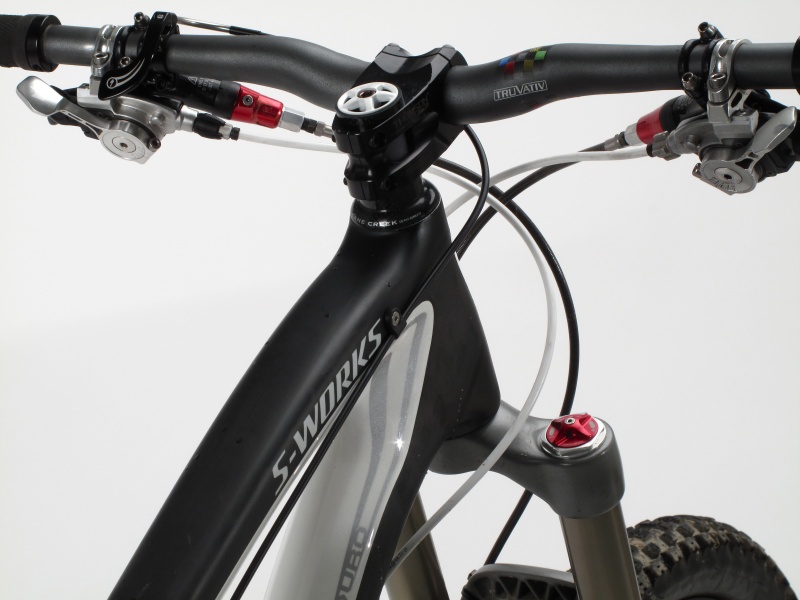
Controls are a mix of SRAM, Truvativ, and Avid, with a short 50mm Thomson stem thrown in for good measure
| Frame and Size | Specialized S-Works Enduro, carbon fiber •medium Frame |
| Rear Shock | Fox RP23 |
| Fork | Fox 36 Float RC2 •160 mm travel |
| Headset | Cane Creek |
| Crankarms | Truvativ HammerSchmidt, 170 mm |
| Chainring | Truvativ HammerSchmidt, 22t |
| Bottom Bracket | Truvativ HammerSchmidt AM |
| Pedals | Wellgo MG1 |
| Chain | Wipperman 904 |
| Cassette | SRAM PG990 11-34 |
| Rear Derailleur | SRAM X9, short cage |
| Shifters | SRAM X0, HammerSchmidt |
| Handlebar | Truvativ Stylo WC |
| Stem | Thomson, 50 mm |
| Grips | ODI Ruffian |
| Brakes | Avid Elixirs, 7" front/6" rear |
| Front Wheel | Specialized Roval Traverse EL, 20 mm |
| Rear Wheel | Specialized Roval Traverse EL |
| Tires | Front, Kenda Excavator 2.35 folding •Rear, Kenda KOT 2.35 folding |
| Saddle | Fizik Aliante |
| Seatpost | Specialized Command Post (4" drop) w/ remote |
The goal while putting together the Enduro was to have a capable build that could excel in the majority of conditions. I didn't want anything too hefty, as I enjoy doing some proper XC riding, but it needed to be burly enough to let me hang with my DH friends without having to worry about which parts were going to kick the bucket. A fine line indeed. Even a perfectly spec'ed out AM bike is always going to be a compromise in some manner, it's just the nature of the beast. But a smart build will minimize any drawbacks that could otherwise limit the fun factor. With this is mind, I chose to use two products that are stirring up a bit of controversy: a remote actuated telescoping seat post from Specialized, and TruVativ's HammerSchmidt crank system. They both serve the same purpose, which is to make the bike as versatile as possible. The HammerSchmidt is in essence a front shifting system with a built in chainguide, while the Command Post should let me ride confidently without having to adjustment my seat height when the going gets tough. Show up anywhere and ride!
Specialized's own Roval Traverse EL wheelset suits the Enduro and my intentions perfectly, while as a bonus coming in at a very light 1612 grams. I installed a set of Kenda tires without using tubes, a 2.35 Excavator up front and a soft condition specific KOT out back. I'm a big fan of Fox's 36 series of forks and have had nothing but good results with the RP23 that is found on the rear of the Enduro. This makes the carbon Specialized an entirely Fox damped machine.
The stated goal in the preview article was to bring the bike in at under 30 lbs, which would be something to brag about as the bike has both a HammerSchmidt crankset and a telescoping post, two bits that add a considerable amount of heft. Total weight was not, and should never be, a first concern, but it's always fun to try and hit a target weight. We came up a bit short unfortunately, with the final weigh-in revealing a just over the line 30lbs 3 oz as she sits right now. Not too shabby if you ask me!
There are some bikes that hide their true character well. You know the ones, they don't feel like anything great during the introductory meeting but their later impressions at speed reveal their true temperament. Specialized's Enduro is clearly not one of those sorts of machines. The first sit quickly let me know that it is a bike that wants to go fast. A slightly longer feel in the reach department than some other mid-travel bikes combined with a steep seat angle screamed "pedal harder!" even during the first ride in the lot. Although advertised as being only half a degree slacker than my personal bike, it was quickly obvious that the front axle was noticeably further out in front of me. And the suspension! I don't think I've ever felt an RP23 be so hypersensitive. If you've read my previous tests of bikes that have come stock with Fox's compact air sprung damper, you'll know that I am a fan of what they've been able to get the RP to do. After setting the Enduro up to sit into 30% of it's travel under me it still remained strangely responsive to even the slightest nudge on the seat. I never get too caught up in the whole "mine is plusher than yours" sort of thing as it seems to play little part in the bike's performance when being ridden in anger (as well as being the first sign of a possibly under damped fork or shock), but if done right it certainly can only help. I came back from the first spin around the building hoping for an active yet controlled bike.
Long and slack, light but with a solid build. Suspension that let loose at the slightest hint of trouble. Angles that told me that I better be ready to drop to a harder gear on both the descents and climbs. Time to get on some dirt and see what it all really means.
The Enduro has a few geometry ingredients that contribute to its relatively good climbing abilities. The most notable is its steep 75 degree (effective) seat tube angle. Specialized has chosen, for whatever reason, not to highlight this detail even though I found it to be a huge benefit while working to get the 6.3" travel Enduro up and over the hills. This is interesting as this geometry highlight features prominently in other manufacturers ads. The steeper than average seat angle helps in two ways; first, I found that my center of gravity while seated was more forward than I was used to which very much lessened the negative effects of running a short stem. Secondly, the geometry lends itself to seated climbing, usually the best technique while aboard a 6" bike. Because the Enduro is so active with the ProPedal lever in the off position that I usually ran it as such, I found the steep seat angle to be advantageous. Standing to really put the power down underlined the Enduro's lively suspension, without any ProPedal engaged the bike was very susceptible to any and all body movements.
While far from the position found on dedicated XC race machines, the Enduro's slightly stretched top tube helped to reduce the cramped feeling caused by running a shorter than average 50 mm stem. The obvious solution to a cramped cockpit is a longer stem, but due to the style of riding I tend to do I prefer a shorter option than the average XC/AM rider. I was pleased to find that I had a bit more breathing room up front while running my usual short stem, obviously raising the comfort factor on longer climbs. As some keen readers of the PREVIEW noted, I chose to not equip the Enduro with a travel adjustable fork. This was based purely on where I do most of my climbing, fireroads, as well as my previous experiences with adjustable travel forks, which is not good. While the front end did need a little more attention, even while climbing fireroads, I was hoping that the bike would not be too much of a handful on singletrack ascents. Unfortunately climbing anything remotely technical required an exaggerated position (even for a 6" AM bike) that I was never quite comfortable with. I can't fault Specialized for this whatsoever, as all of the stock Enduro's come stock with travel adjust forks, save the entry level Comp model. If building up your own Enduro I recommend not doing as I did and use an adjustable travel fork.
At a touch over 30 lbs, the Specialized is on the light end of the scale for bikes equipped with both a telescoping seatpost and HammerSchmidt crankset. Given the bare frame's light weight, it would be easy to break in to the 26-27 lb range with the right component choices. If I put more emphasis on ascending I could see myself aiming for lower target weight, but as it sits I was happy with the bike's weight, especially with the parts I chose to use.
As stated above, with the ProPedal off I found the Enduro to be more active that I would have preferred. I would have been happy to not to use the ProPedal in more situations but I felt that I was forced to hit the PP lever more often than I would have liked. Of course the other solution would be to simply run more air pressure in the shock, although that would have compromised the bikes descending prowess. Overall the Enduro proved to be a capable climber, if a bit dependent on pedal assists.
It didn't take long to come to the realization that the Enduro is easily one of the more forgiving 6" bikes, referring to both the quality of travel and the handling. Dropping the Command Post and rolling into the first few descents was a real eye opener. The relaxed head angle combined with suspension that feels like Specialized is hiding 180mm somewhere in the bike's advertised 160mm of rear wheel travel make for an eye opening experience. Small, high frequency trail chatter that I've felt fed up through the bike on other machines felt much more muted as I passed over the same terrain on the carbon Enduro. I'll make it even more clear: different frames with the same amount of travel and sag, and all with the same parts, made it very clear to me that this bike muffles those fast traction-upsetting bits very well. With the Enduro's Little Fox RP23 set to full open and 30% sag, the bike certainly had less trouble searching for grip in those very places than some of its counterparts.
There are some 6" machines out there that are a bit one dimensional in the travel department. What I mean by that statement is that you either set the rear end up to be quite free moving during the first and middle part of its stroke and suffer from a bike that closes down on its travel too fast at the opposite end of the travel, or you go the other route and have a machine ready for the big moves but lacking in comfort. On a bigger 8" travel DH bike a designer has more room to work in the proper suspension rate and it's easier to find both traits. Simply put, a 6" bike has a smaller window to do something great with. The gang of 6" bikes that sit in the "you can only have one or the other" category is a lot bigger than the number of bikes that don't have this problem. Thankfully the Enduro is one of those rare birds that lets the rider not only have his cake but eat it as well. Despite being active and supple (insert over used term here), the Specialized used its travel wisely and I never found myself using too much of the stroke too often. At 30% sag I never once had a hard bottom out moment, even when transitions were not quite up to par or when I missed them entirely. The bike used its travel but used it wisely. The aluminum rear end and Horst Link suspension never complained about being on the brakes and felt as stiff as a rider could want.
So is it all peachy aboard the Enduro? Mostly yes, but even a bike as well mannered as Specialized's AM machine has room for improvement.
My one caveat about the Enduro is that that same all-encompassing descending prowess and understanding nature when the trail points down can easily negate the very reasons why I have so much fun on this category of bike. With the bike's Fox shock pumped to between 25-30% sag, the Enduro lacks that fun and playful feel that a lot of riders seek out with this sort of bike. Pumping the terrain does take more effort and it's certainly a bit easier to get lazy aboard Specialized and let the bike do too much of the work. The tolerant nature of the Enduro also doesn't give you quite as much support in hard corners. Don't confuse these statements though, it's not that the Enduro uses too much travel, but that the travel that it does use is quite active. Another way to look at the above is that one always has the option of firming up the ride, either with a shock pump or the Fox shock's Pro Pedal lever, but at the expense of that chunder eating suspension that I raved about in the previous few paragraphs.
The Enduro has a very capable DH bike-esque feel to it and those coming off their big travel bikes to ride it will feel right at home. I'm confident in saying that I've never felt more at home on a mid-travel bike when the terrain gets rough and fast. If your local trails have a near pavement smooth surface on them, then the forgiving Enduro will be a waste. This is a bike that always wants to go faster than you and I applaud Specialized for not adding unneeded heft to the Enduro simply because it is such a capable descender. Light weight and DH friendly geometry in one package.
• I really enjoyed using the Specialized Command Post and you can read more about it in its own review.
• My HammerSchmidt crankset ran smoother on the Enduro and its Adaptatron splined ISCG adapter than any Hammschmidt on any other bike I've tried. I was impressed! I won't talk too much about it here as a long term review will be happening at some point, but it performed as advertised and reliability while on the bike was never in question.
• I had some issues with the Elixir brakes on the Enduro that I never managed to pin down. I feel that they are a bit down on power compared to the brakes they replaced, the Juicys. On top of that they had an inconsistent feel that no amount of bleeding seemed to solve.
• The combination of a 2.35 Kenda Excavator up front and 2.35 KOT out back is just the ticket for questionable wet season riding. Sure, they rolled slower than the average blue haired Caddy driver, but traction was plentiful.
•The other major talking point includes Specialized's own Roval Traverse EL wheelset that we previewed awhile back. Uber-light at 1612 grams, these stealth looking wheels use 24 straight pull spokes for the front wheel and 28 for the rear, and are compatible with the large majority of the latest AM bike axle options (including 15 mm front axles). Hidden inside the aluminum freehub is DT's proven Star-Ratchet clutch. The rim itself is also shaped as to make tubeless conversion easier. The Rovals proved to be a reliable wheelset throughout my time on them, never needing truing done or tension added to this day. At well under 1700 grams, they were clearly not as stiff as wheels approaching the 2000 gram mark (as many AM-oriented weigh), but at the end of the day I much preferred the EL's light weight during long days in the saddle. I should also mention that even though they were not quiet as stiff, they did prove every bit as reliable as any heavier wheelset I've had under me.
The Enduro is the most surefooted 6" travel bike I've been on, no two ways about it. The bike's character inspires confidence and begs to go faster on challenging terrain. I don't want to tell you that a more timid rider won't benefit from the Enduro, but this bike will come to life under more advanced riders that can take advantage of its angles and suspension. The bike's climbing ability was a bit dependent on the Fox shock's Pro Pedal lever but some riders may not mind as it is quick and easy to reach. If you are considering building an Enduro from the frame up be sure to use a travel adjust fork unless most of the climbing you do is on fire roads. As an all-rounder the Specialized certainly leans more towards the downhill portions of the mountain, but if you are o.k. with hitting the Pro Pedal lever every now and then the bike is transformed into a capable climber as well.
Above was a review of our custom built carbon Enduro S-Works that began life as a bare frame with an MSRP of $2800 USD. The Enduro lineup spans five complete models, including two carbon framed models and three aluminum bikes that start at $2800 USD for the complete Enduro SL Comp model.
Visit Specialized.com to see their entire range of bikes and accessories.
What do you think of Specialized's latest carbon creation? Do you take issue with how I put mine together? Tell me about it below!
Follow my '10 Ride Blog
Author Info:
Must Read This Week
Sign Up for the Pinkbike Newsletter - All the Biggest, Most Interesting Stories in your Inbox
PB Newsletter Signup

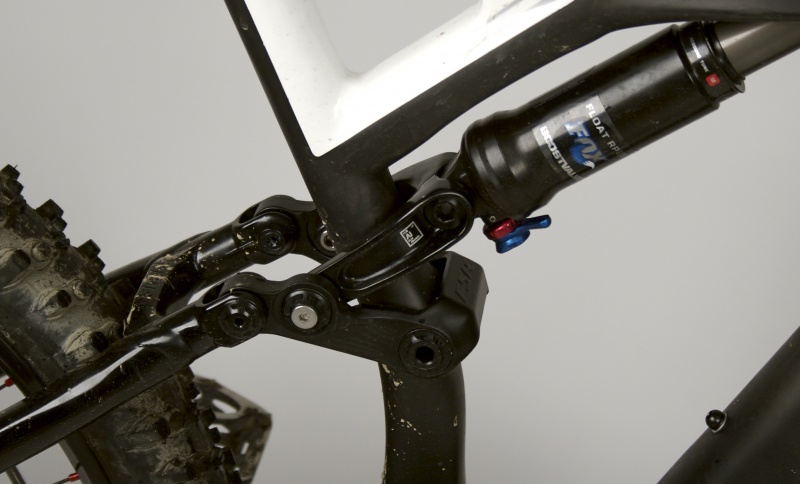

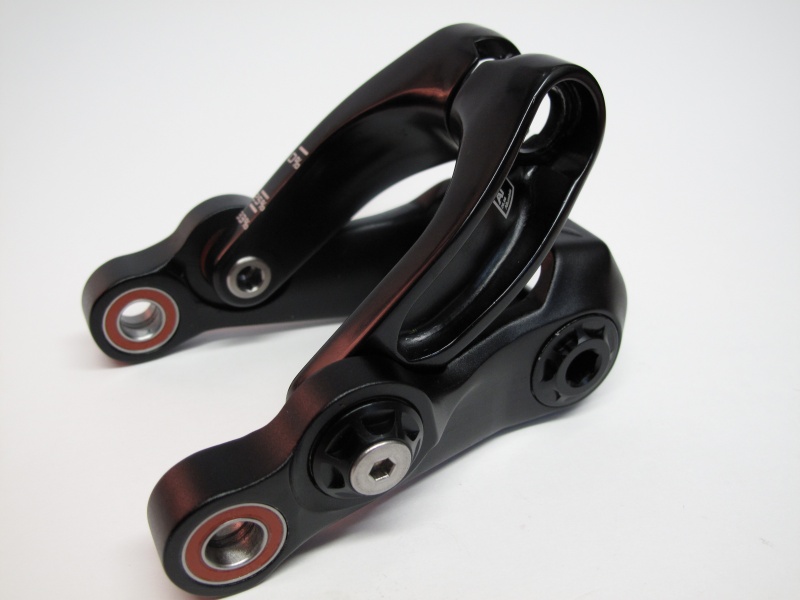

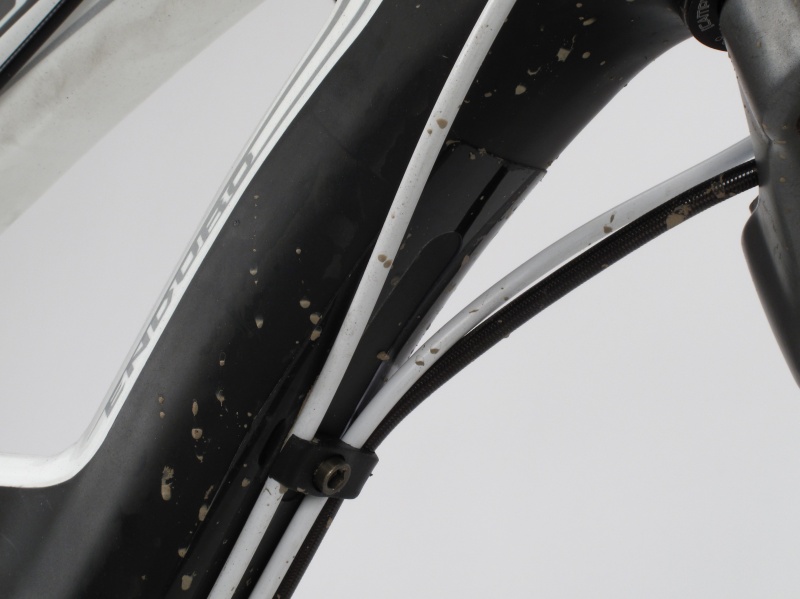
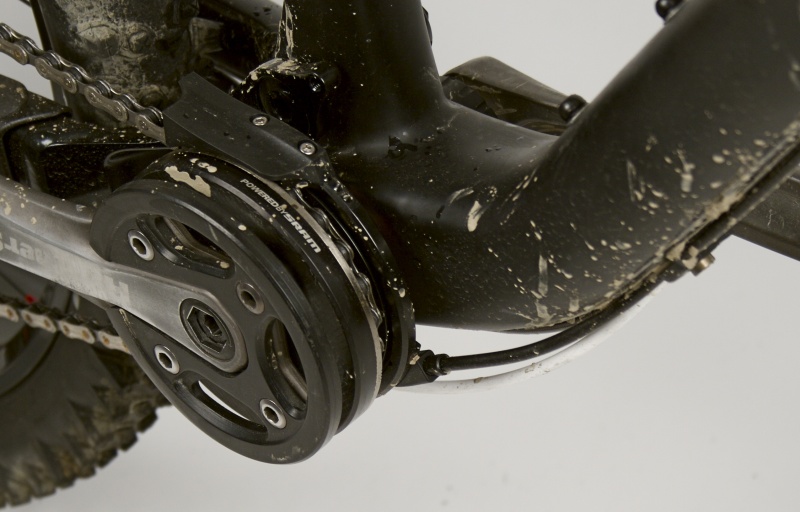







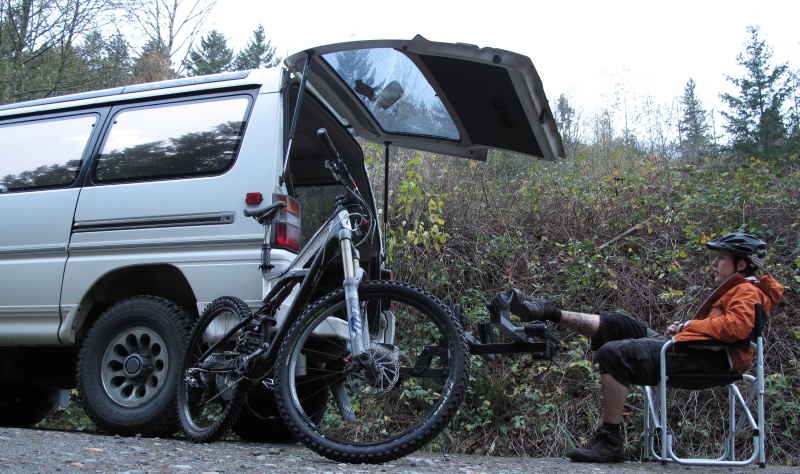

that topcap looks awesome = +1
frame design = +2
first time ever i am interested in a XC/AM bike
Though I would prefer to see more of these 140-165 rear travel bikes with full 1.5" head tubes so you can use the "new school" patents like k9 industries headsets, so you can choose what head angle you want to have on your favourite bike.
heres was mine:
www.southerndownhill.com/forum/index.php/topic,212628.0.html
she weight 31.04lbs after putting all the heavy duty stuff on :]]]
I have to say, as a Mitsubishi EVO IX owner, your van is killer!! What is it? We never got anything like that in the States. Keep up the good work on the reviews!
Would you care to elaborate about your dislike and negative experience with regards to adjustable travel forks? I find I get a lot of drag somewhere in on my bike (it feels like the brakes are being applied) when I lower my 36 TALAS on my 2005 Enduro all the way down. The problem is, I can't figure out what the problem really is. But it's gotten to the point I don't bother lowering the fork, and at this point I feel I should have just gone with a Float and saved the cash and weight. Is that what your experience has been too?
now, some month into the riding season whats your opinion on stability and durability regarding your style of riding on a carbon AM (or in European, Enduro-)bike.
How does it take the usual "klonk"-hits one gets riding rougher/rockier (alpine) terrain?
I´m looking into building up my perfect Endurobike, and being a very satisfied Specialized rider (2004 FSR XC/big hit) the Enduro comes into my considerations naturally.
As my style of riding changed over the years I set the goal to 6" travel, handling like the old bike (i consider it playful, short chain stay and wheel base, the fsr) but better downhillskills (I blame the stem). Though you metioned that weight shouldn´t be the main goal in my opinion spending a hell a lot of money on a carbon bike it should be well under 30 lbs as i can build up that weight also on the old-old-enduro/sx-trail frame. So 26,5 lbs is my ultimate goal after some tuning when riding it a while. Not sure yet if this will work with the hammerschmidt although i love the idea.
I´d be very thankfull for any thoughts on it, or alternative frames to built up? (old/new remedy/scratch, uzzi, nomad...)
cheers Helmuth
bikeshop
warranty
componentry
I've found that the trick is to push fluid in first from the top (just a little squirt) to free up the bubbles at the syringe fitting. Then push fluid up to the lever until the bottom syringe is nearly empty. Then push the fluid back down again to free up any bubbles trapped in the caliper before then pushing the fluid back up to the lever.
Then just lock off the syringes and remove the bottom one first and plug the bleed port followed by the top one, etc. You should be good to go. Of course it goes without saying to use a fresh bottle of 5.1 when you start.
On the shock issue... I have a stumpy with a similar suspension design and some friends with the new enduro. Once specialized took the lower bushing out of the equation with the new link there is no more bushing friction as the shock cycles. This makes the suspension very active to even the slightest bumps. I feel that specialized should have instructed Fox to put a little more low speed compression valving into the shock to compensate and give the suspension a little more control. You might try getting your shock pushed and see what that does for you to give the support in the corners you are looking for. It is my understanding that with a very simple mod to the shock a DHX can be fitted to the enduro so that may be an option as well, however I haven't tried it yet.
I'm 5'9" and the frame was a medium.
Not sure what you are meaning here, can you explain? =)
As for the review, i thought it was great and really well written. I recently bought the expert model of the 2010 enduro (not carbon, but still an awesome bike) and i havent been able to take it out for real yet cuz of the weather, but im looking forward to it. specialized did a great job on this bike from what i've found so far and im really happy i got it. I almost bought the trek scratch instead (which im sure is a great bike) but i think the specialized turned out to be a lot more versitile.
I think I'm missing your point, sorry! Just because one aluminum chainstay broke while under doesn't mean another one will, and it certainly doesn't mean that it needs to be made out of a different material. I've seen lots of broken bits made of every material and ridden by both skinny scared riders and fat brave riders. A simple parking lot spin isn't going to tell you that the "rear end is weak" =)